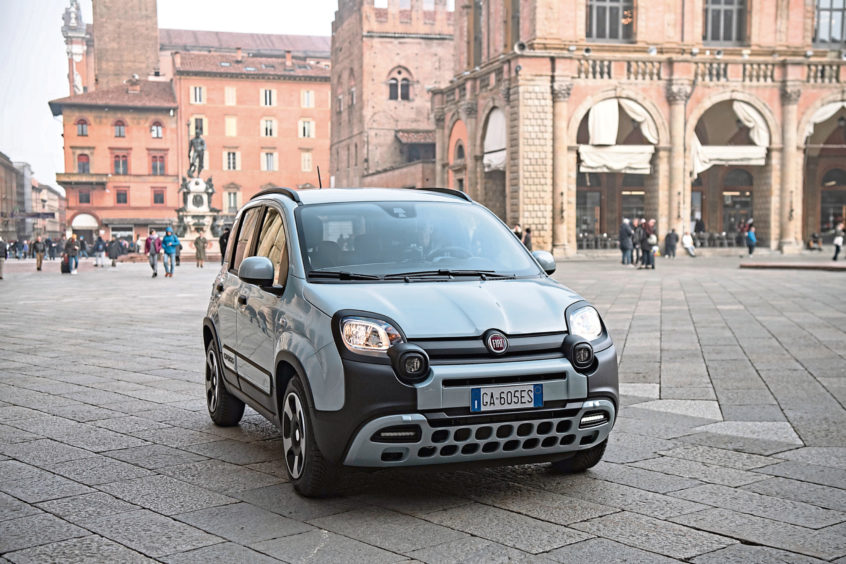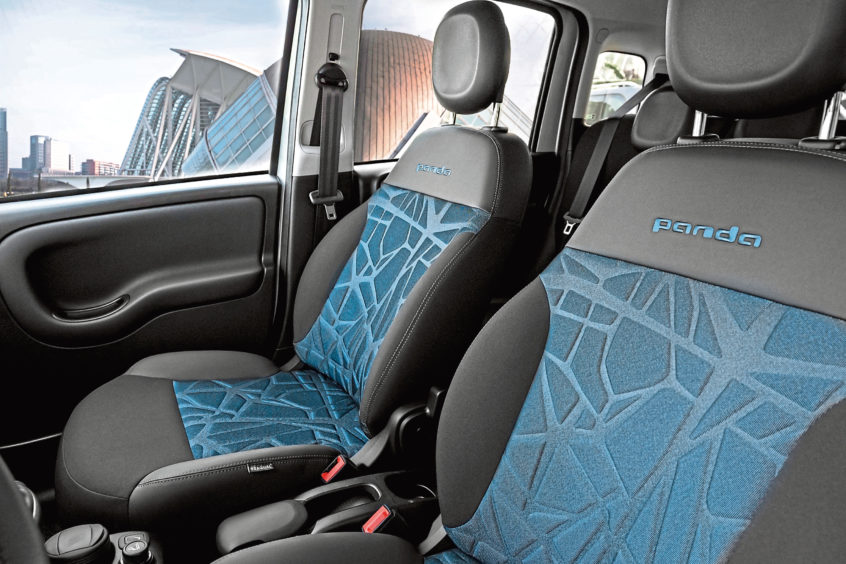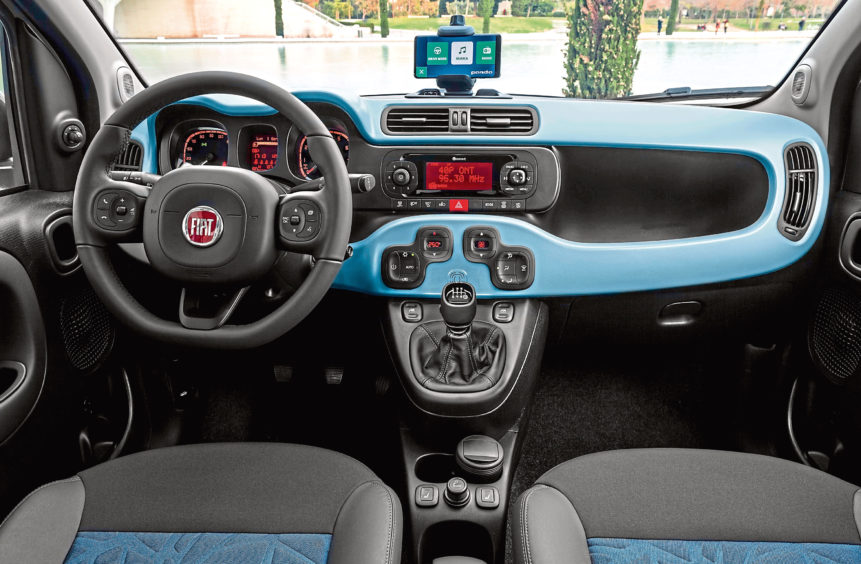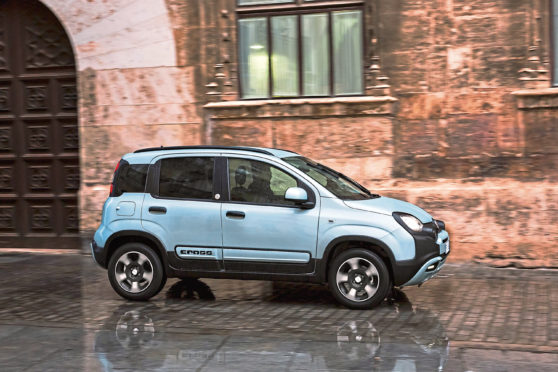Shock horror. Fiat has finally made a noticeable change to its Panda city car.
It’s not a model that is frequently seen on UK roads, but in Italy it’s as if Fiat has been giving them away for free.
Little wonder that it’s Italy’s best-selling car, with models diving in and out of traffic as if there’s no tomorrow – their drivers seemingly fearless given its recent abysmal safety rating from Euro NCAP where it received a shocking zero star rating.
But its ability to slot into the tightest of parking spaces and down the narrowest of streets makes it a city-car icon, with the model celebrating its 40th birthday in 2020.
Now, nine years after the model went on sale, there’s a new version – the Panda Hybrid. But is Fiat flogging a dead horse to UK buyers, who have the option of much newer alternatives?
So what’s new?
Available on the quirky faux-rugged “Cross” versions of the Panda is this new mild-hybrid option.

It’s being rolled out into Fiat’s fellow 500 city car at the same time, and features a 1.0-litre petrol engine mated to an electric motor and battery – offering slight performance benefits but, more noticeably, efficiency gains. That’s particularly important on these low-cost models.
More on the new powertrain later, but for now buyers are also able to take advantage of a vivid Hybrid Launch Edition – featuring distinctive paintwork as well as an “automotive-first” use of Seaqual yarn. Confused? Well, it’s basically a material made of recycled plastics – some of which have been dragged out of our suffering oceans. BMW and Renault have already gone down this route, though this “every little helps” approach to saving the environment shouldn’t be sniffed at.
But you certainly won’t be choosing a Panda Hybrid for its performance, and while Fiat says it offers 25 % more torque than the outgoing 1.2-litre petrol engine, a measly 69bhp and 92Nm of torque don’t give you that impression.
The sprint from 0-60mph is almost amusingly slow – taking a full 14.5 seconds, while Fiat says it would reach 96mph if you kept your foot planted on the accelerator for long enough.
As for the mild-hybrid powertrain itself, it’s not quite as complex as you might think. Essentially the engine works with a belt-starter generator electric motor and a small battery – the latter harnessing energy when the model’s decelerating, which is then fed to the motor to use when accelerating. It’s a smooth process, and one you don’t tend to notice.

But the key benefit of this new engine is the efficiency benefits, as it reduces CO2 emissions by a substantial 31% to just 89g/km, which is best in class. Fiat says it will return a combined 49.6mpg.
Behind the wheel, the Panda is a model that’s hard not to love. The high ride height gives you a great view of the road, while large windows all round offer superb visibility – meaning you can slot into parking spaces you’d normally drive past and think “nah, I won’t fit in there”.
While a revised six-speed manual transmission can be a bit notchy, it means the Panda doesn’t feel as out of depth at higher speeds as you might think – once you’ve got up to speed that is.
But it’s not without its quirks, though. The roll and understeer through the corners if you’re pressing on is laughable, while if you want to take advantage of the engine-off coasting function that automatically engages in most mild-hybrids, you have to take it out of gear and leave it in neutral, and then select a gear again if you want the engine to return to life. It’s a truly bizarre way of doing things, and one we suspect most owners won’t bother with.
However, just like the 500 still looks the part after years and years on sales, so does the Panda.
It’s perhaps most visually appealing in this “Cross” grade – a model that plays into the hands of those wanting the rugged looks of a crossover. Few cars attract the attention that this Panda Hybrid got through the streets of (pre-coronavirus lockdown) Bologna, with the quirky style making it look like nothing else on the roads today.
Inside is where the Panda’s age really shows though. While still having an ergonomic layout, simple buttons and a wash of cheap plastics make the cabin feel outdated next to more modern rivals. There’s also no option to have a touchscreen, though you do get an in-built cradle on the top of the dash to put your smartphone on.

But thankfully plenty of funky touches like textured plastic spelling “PANDA”, as well as a coloured dashboard and chunky buttons help to lift things. It’s also more spacious than its 500 sibling – offering a decent 225-litre boot and room in the rear seats for adults, though preferably not for longer journeys.
The switch to mild-hybrid on the Panda only adds an additional £250 to the price of the city car – something that could quite easily pay for itself considering the fuel savings.
With the Panda Hybrid only being available in higher-spec “Cross” versions, it means the trim choice consists of the City Cross, Launch Edition and Trussardi. We’re trying the middle option, which costs from £14,385 – nearly £2,500 less than a 500 Hybrid in the same spec.
Standard kit is generous, too, including 15-inch alloy wheels, heated seats, rear parking sensors and a leather steering wheel to name but a few luxuries that are included for the relatively inexpensive starting price
There are certain cars that are flawed, but have such big personalities that they can get away with it. Models like Morgans and the old Land Rover Defender spring to mind, and the Fiat Panda is another model that fits in this bubble.
THE FACTS
- Model: Fiat Panda Hybrid
- Price: £14,385
- Engine: 1.0-litre petrol engine mated to an electric motor and battery
- Performance: 0-60mph in 14.5 seconds
- Economy: 49.6mp
